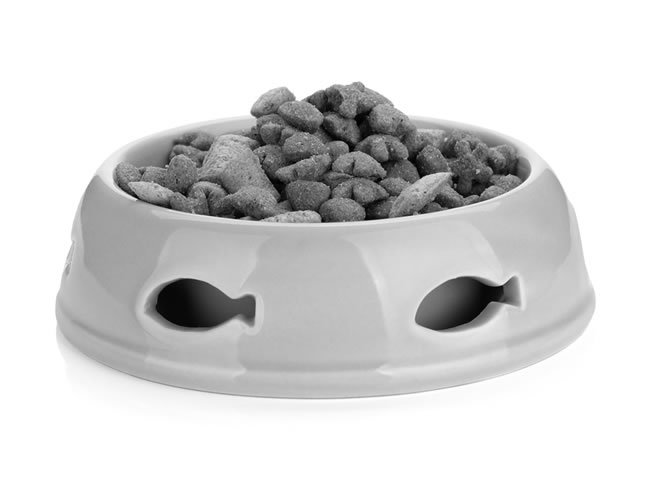Demystifying the ingredients in commercial food is only one step in providing a healthy diet for our cats. The ongoing challenge is preventing the spread of food-borne illness to animals and people in the household. At last count, manufacturers had recalled five of six dog and cat foods this year because of possible contamination with the bacteria salmonella. The sixth recalled food was suspected of containing the bacteria Listeria monocytogenes that can also cause serious infection in humans and animals.
Salmonella causes 1.2 million illnesses, 23,000 hospitalizations and 450 deaths in people in the U.S. annually, usually from eating undercooked meat, poultry, eggs and raw milk, according to the Centers for Disease Control and Prevention. The bacteria is spread through exposure to human and animal feces, but owners can also be exposed to it by handling pet food and treats contaminated with salmonella and other organisms.
Appearing Healthy. Signs of salmonellosis in people include diarrhea, fever and abdominal cramps, developing up to three days after infection. Those most at risk are children under 5, the elderly, pregnant and immune-compromised. In cats the signs include lethargy, diarrhea, vomiting, dehydration, elevated heart rate, mucus in the stool, weight loss, swollen lymph nodes and shock. A major concern is that pets who have eaten contaminated food can carry germs even if they appear healthy.
Bigstock

The best advice for safe pet-food handling is simple common sense. Wash your hands for 20 seconds with water and soap right after handling pet food and treats, and especially before preparing, serving or eating food, drinks or preparing baby bottles, the CDC says. Also, wash your hands after contact with animals, their food and their environments.
The agency also makes these recommendations that might entail adjustments in household routine:
-When possible, feed your cat in areas other than the kitchen to prevent germs in pet food from contaminating people food.
-Keep his food away from your food storage.
-Dont wash his food and water dishes in the kitchen sink or bathtub to prevent cross-contamination. If there is no alternative, clean and disinfect the sink after washing pet food items, the CDC says.
And – good luck with this – keep pets away from food preparation areas. Actually, its a smart idea because, as safety articles in CatWatch have pointed out, cats underfoot during meal preparation can also cause the cook to slip and fall, and put pets at risks for burns. The same advice on avoiding burns applies to cats counter surfing.
The CDC and Food and Drug Administration offer this advice on buying and handling pet food:
-Buy products without dents, tears or other damage to the packaging.
-Wash pet food bowls, dishes and scooping utensils with soap and hot water after each use.
-Dont use the feeding bowl as a scooper. Use a clean, dedicated scoop or spoon.
-Dispose of old or spoiled pet food in securely tied plastic bags in a covered trash can.
-Promptly store leftover wet pet food in the refrigerator set at 40 degrees Fahrenheit. Refrigerating foods quickly prevents the growth of most harmful bacteria, the CDC says. Store dry products in a dry place under 80 degrees.
-Keep dry food in its original bag in a clean, dedicated plastic container with a lid with the bag folded closed.



